Average sizes and life expectancy for this breed:
Border Terriers were originally bred to be of assistance in foxhunts, by driving foxes out of their hiding holes and out into the open for hounds to chase. Today, these affectionate dogs are popular family pets and canine companions around the world.
These outgoing dogs are true workers with a strong hunting instinct and a powerful desire to dig. They are loving, loyal, and devoted companions for owners who are able to offer them plenty of mental and physical stimulation. One of the most remarkable traits of these dogs is their impressive stamina because of their ancestry of following horses all day long. Because of this, they need a tremendous amount of daily exercise and mental stimulation so they can become truly happy and well-rounded dogs. Without regular attention and exercise, they can become bored easily.
The Border Terrier has been around for many years. As their name suggests, these playful dogs originated from the border between Scotland and England. They have a fascinating ancestry that they share with the Bedlington, Dandie Dinmont, and Patterdale Terriers. While they have been around for a long time, it was only in 1920 that the Kennel Club officially recognised the breed.
See available puppies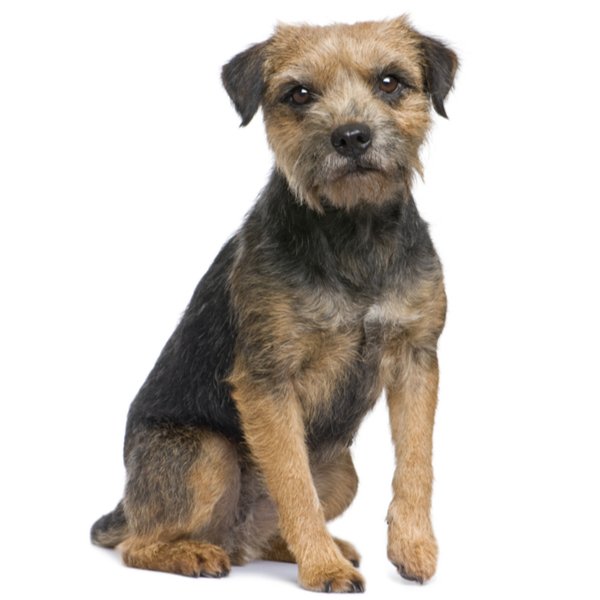

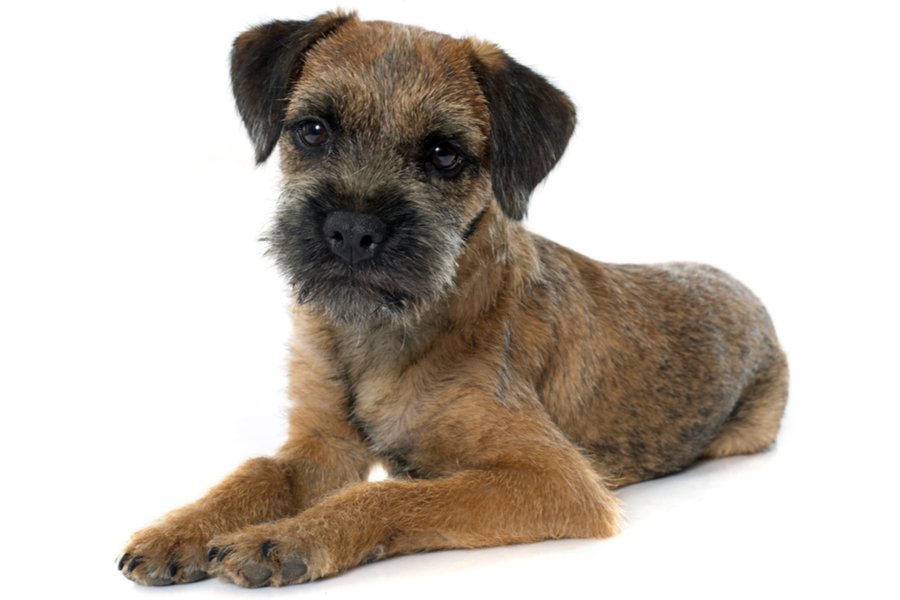


These happy terriers were once called the Redesdale Terrier or the Coquetdale Terrier, depending on the area they were bred. However, they were called Border Terriers by the end of the 1800s because of their close association with the Border Hunt of Northumberland. Border Terriers are one of the United Kingdom’s oldest native terriers, with records of these dogs dating back to the 18th century.
As mentioned, the Border Terriers share their ancestry with other dog breeds such as the Bedlington Terrier, Dandie Dinmont Terrier, and the Patterdale Terrier. These little hardy terriers were developed to be strong and capable of coping with the harsh climate of the borders between Scotland and England. Border Terriers were originally bred and utilised by local farmers and shepherds to keep fox numbers, and other vermin, under control.
During the 19th century, foxhunting became a popular sport. With this, Border Terriers were commonly used to chase foxes out of their hiding places and dens. These dogs quickly became known for their tremendous stamina. They were capable of following their quarry over long distances and rough terrain.
The breed has changed little since then. In fact, many breed enthusiasts believe that the Border Terrier is the “perfect” dog both in appearance and character. In 1920, The Kennel Club officially recognised the breed. Over the years, the Border Terrier gained popularity and even became regular attendees at dog shows. Today, they are considered to be one of the most popular breeds in the United Kingdom, achieving outstanding results when they compete at Championship levels.
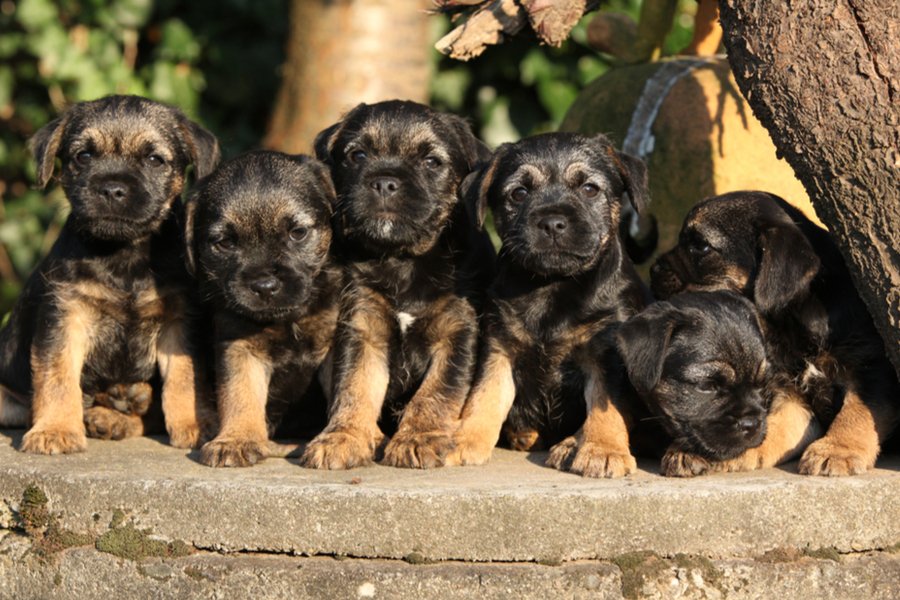
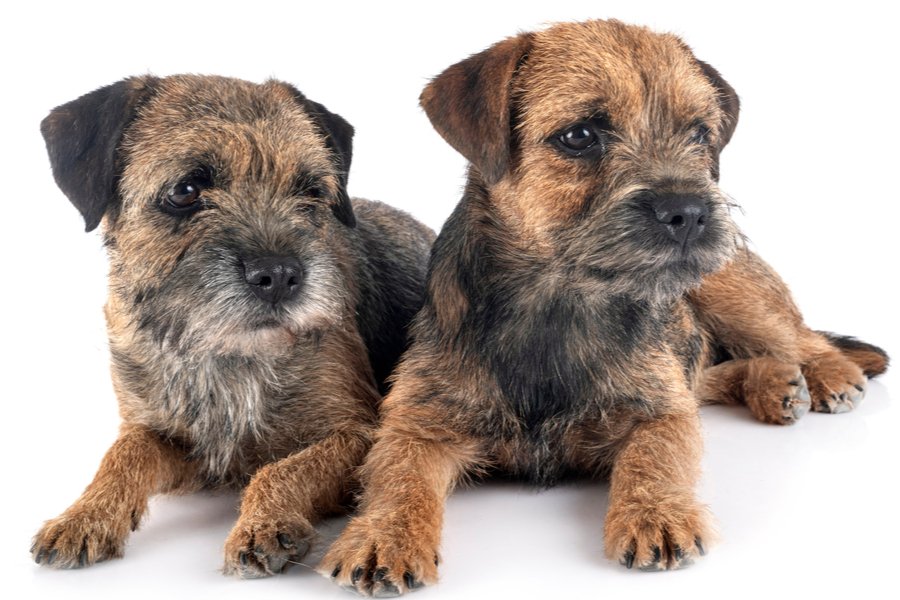
These hardy dogs are perfectly built for the task that they were bred and developed to do. These are sturdy, compact, and well put together dogs with an amazing amount of stamina. They have very “otter-like” heads that have a broadish skull and a short, strong-looking muzzle. Their noses are typically black in colour, but there are dogs with liver or flesh-coloured noses.
Border Terriers have an alert and keen expression in their dark eyes. They also have strong jawlines with a perfect scissor bite, and small, v-shaped ears. Their necks are nicely proportioned in relation to the rest of the body, which is long and narrow. The ribcage is set a little far back but never too wide. Their hindquarters are long and lean and their feet are small with well-formed, thick pads. Border Terriers, compared to other terriers, have long legs because they were bred to have the stride to follow horses on a hunt. This is one of their most distinctive physical traits. Their tails are short and thicker at the base. It tapers off at the tip and is carried high.
These dogs have a double coat that consists of a coarse, wiry top coat and a softer undercoat. Accepted coat colours by the UK Kennel Club registration are: Red, Wheaten, Grizzle and tan, and Blue and tan.
Despite their somewhat shabby appearance, Border Terriers are beloved for their happy, sociable, and affectionate natures. They are frequently described as “energetic terriers well-known for their gameness”. This is particularly true for these terriers as they need to be kept busy to be truly happy and well-rounded dogs. These dogs have a strong hunting instinct so they need to have regular mental and physical stimulation. Outdoor opportunities to play and explore will be greatly appreciated! With everything said about this breed, given that they are provided with the right amount of exercise and affection, Border Terriers make wonderful family pets for the right owners.
These dogs aren’t known to be big barkers but they can be yappy, just like all terrier breeds, especially when bored. That said, they will quickly alert you to a stranger at the door so they make good watchdogs.
Despite their small size, Border Terriers are excellent at agility because they love being active. They tend to excel at canine sporting activities and love the attention they get when participating in any competition.
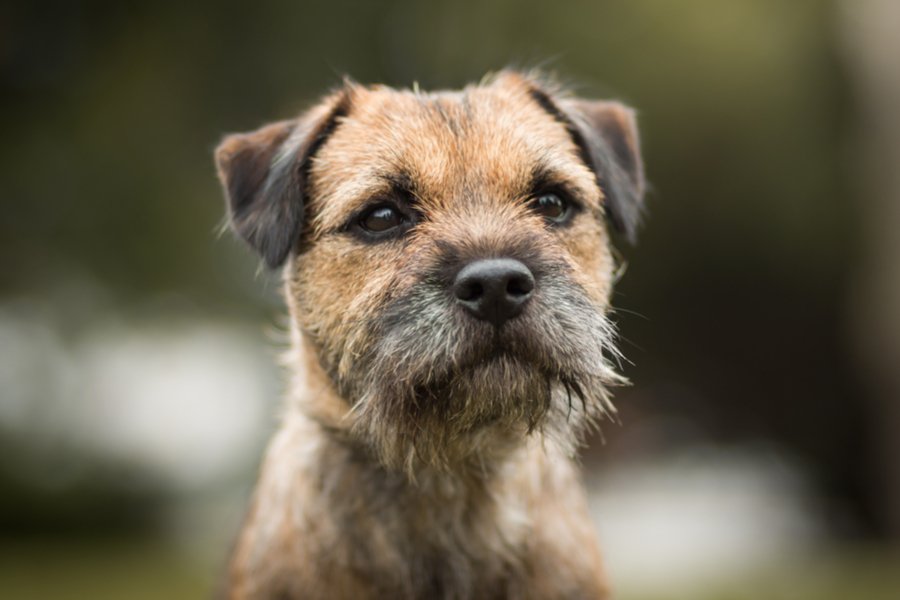
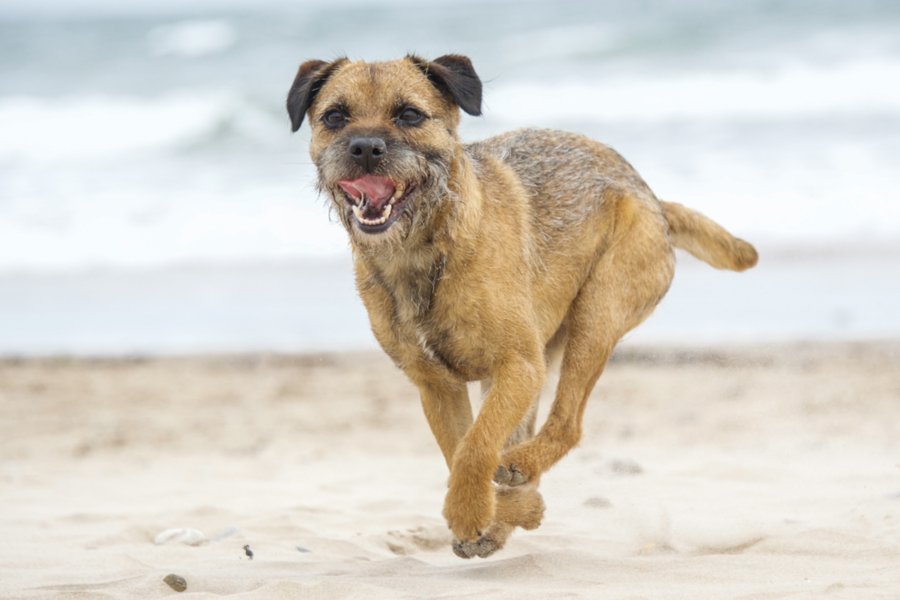
Similar to other dog breeds, Border Terriers need to be well-socialised from an early age. They are known to be fairly stubborn-minded but this can be controlled with training. Border Terriers are intelligent dogs. This means that they learn things easily and quickly – both the good and the bad. Combined with their high prey drive, it is imperative that your garden is very secure as they will try to get under or over the fence should they wish to. Border Terriers are known to be highly skilled escape artists and they love to dig!
While they may appear hardy, Border Terriers are sensitive, and they respond better to positive reinforcement training. Refrain from using tough or harsh training and handling methods. Like other terriers, their education should start early on as they are more receptive as puppies. Their training must continue all their lives to remind them of their place in the pack.
The biggest challenge in training these clever dogs is that sometimes, when they spot something interesting from a distance, they are likely to follow that and investigate, rather than obey a command. So, recall training is very important. Also, vigorous daily exercise and a lot of mental stimulation are vital for their growth and overall wellness.
Border Terriers boast short, coarse top coats with close-lying undercoats. This means that they are relatively easy to groom and maintain. Twice weekly brushing is adequate to eliminate loose hair and keep it in good condition. They are known to be a low-shedding breed, however, similar to other breeds, they shed more during Spring and again in Autumn. So, more brushing is needed to keep on top of things. In addition, it is recommended to hand-stripped them from time to time to manage shedding and keep their coats healthy. This will also help to maintain their coat colour and texture.
These terriers do not require frequent bathing. However, because of their tendency to dig down into burrows, they can get dirty and muddy, which may require a bath. Just a little reminder not to overdo it, because overbathing can disrupt the natural pH balance of their skin, leading to irritation. So, make sure to use a vet-approved, dog-specific shampoo every time you bathe them and ensure they are thoroughly rinsed and dried afterwards.
Regularly check their ears to make sure they stay dry and free of debris or any foreign objects. Clean their ears using clean cotton or a cloth moistened with a vet-approved ear cleanser. Common signs of an ear infection to look out for include redness, swelling, excessive wax-buildup, head shaking, and excessive ear scratching.
For their dental hygiene, brush their teeth daily to prevent tooth and gum disease and bad breath. However, twice a week brushing is good enough to avoid any tartar and bacteria from growing. Ask your vet what products work best in cleaning their mouth, teeth, gums, and tongue.
Nails must be trimmed as necessary. This way, their nails will remain in good condition. Regular trimming will prevent the nails from getting too long which can be painful and even cause mobility issues in extreme cases. While you carefully do this, check their paw pads to make sure they are wound, dirt, and injury-free.
Also, look at their whole body too as you groom them to see if there are any tender areas, rashes, wounds, and other signs that your Border Terrier may have an infection or other underlying health issue. Regularly examine their eyes, too, as both of them must be clean and clear without pain, discomfort, or discharge.
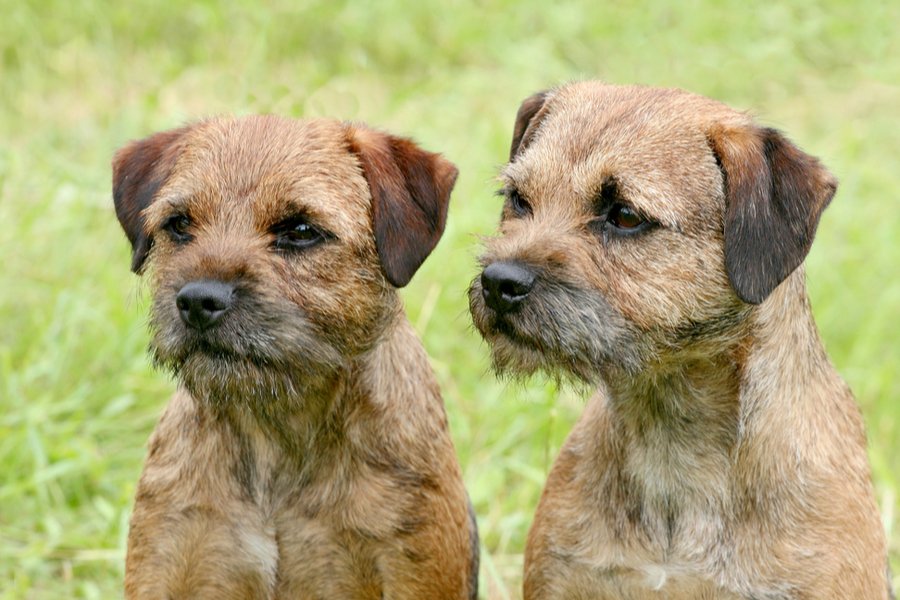
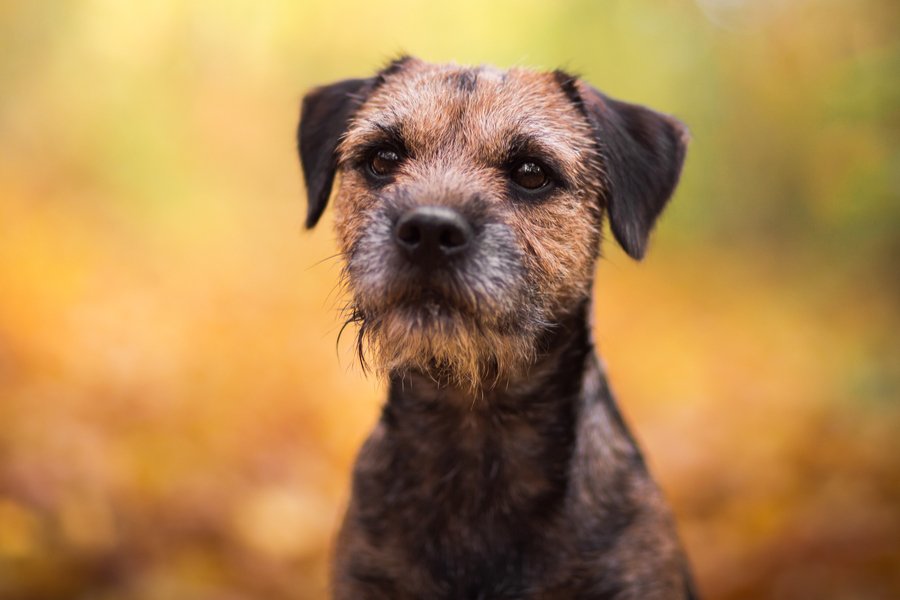
Border Terriers are sturdy, robust dogs provided they are well cared for, However, like all breeds, they are prone to developing certain health issues throughout their lives. Always purchase puppies (and kittens) from licensed breeders to ensure they have been well cared for, socialised, and weaned. Breeders will also perform DNA tests on your puppy and its parents to detect any underlying health conditions that may affect them later in life.
Border Terriers may have some of these health conditions:
These dogs are generally well-behaved, playful, and tolerant of children. Border Terriers are very loving by nature, but they are very energetic and they could potentially knock a child over when playing. Make sure to supervise every interaction to avoid this.
As mentioned, Border Terriers must be well-socialised to get along well with other pets and animals. But because of their strong prey drive, never leave them alone with small animals such as rabbits, pet rats, and guinea pigs because they may see them as prey.
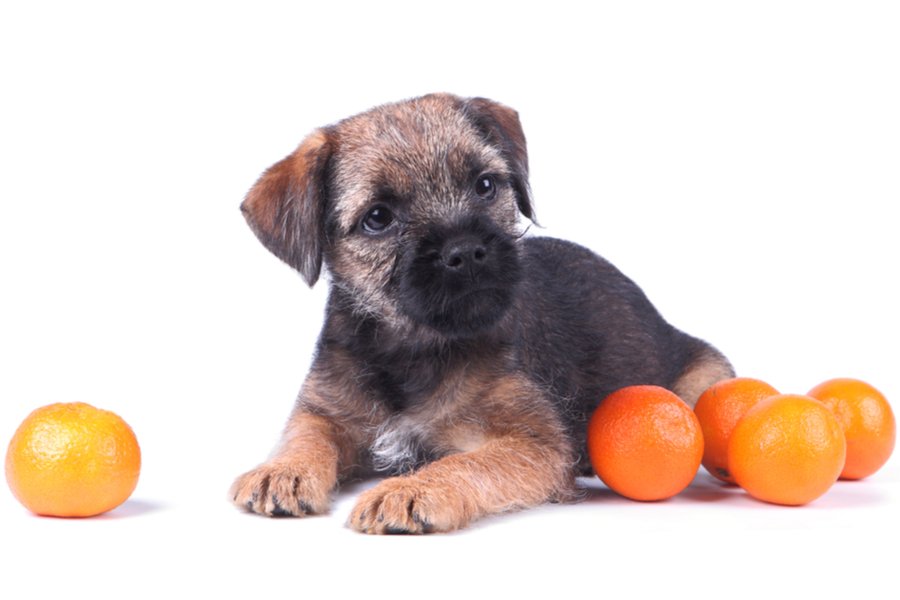

We can connect you with Breeders that are specialized in this particular breed.
See available puppies

Need some advice?
Whether you're a first time pet owner, an experienced pet owner, a new or long-time breeder, or just curious about pets, we've got you covered!

January 17, 2024
What Is The Personality Of Russian Blue Cats?
Russian Blue cats are most known for their distinctive shimmery blue-silver coat and piercing green eyes. However, this breed’s calm and gentle temperament is what makes them shine the most in the feline world.

January 17, 2024
10 Facts About Russian Blue Cat Breed
Russian Blues are one of the most aesthetically stunning cat breeds, with a gorgeous plush silvery coat and vibrant green eyes. However, it’s not only their appearance that is beautiful; their nature is too.

January 17, 2024
How To Choose The Right Cat Breed for You
Cats can make the most fantastic animal companions; they are adorable, friendly, and loving. However, not all felines are created equal. There are many different breeds, of which each has its unique personality traits.
Need some help?
Contact us to speak to our friendly advisor, who will gladly help you find your dream pet!



We are registered in England and Wales under registration number 12568840,
and our registered office is at 58-60 Kensington Church Street, W8 4DB London, England.
© 2023 The Pedigree Paws